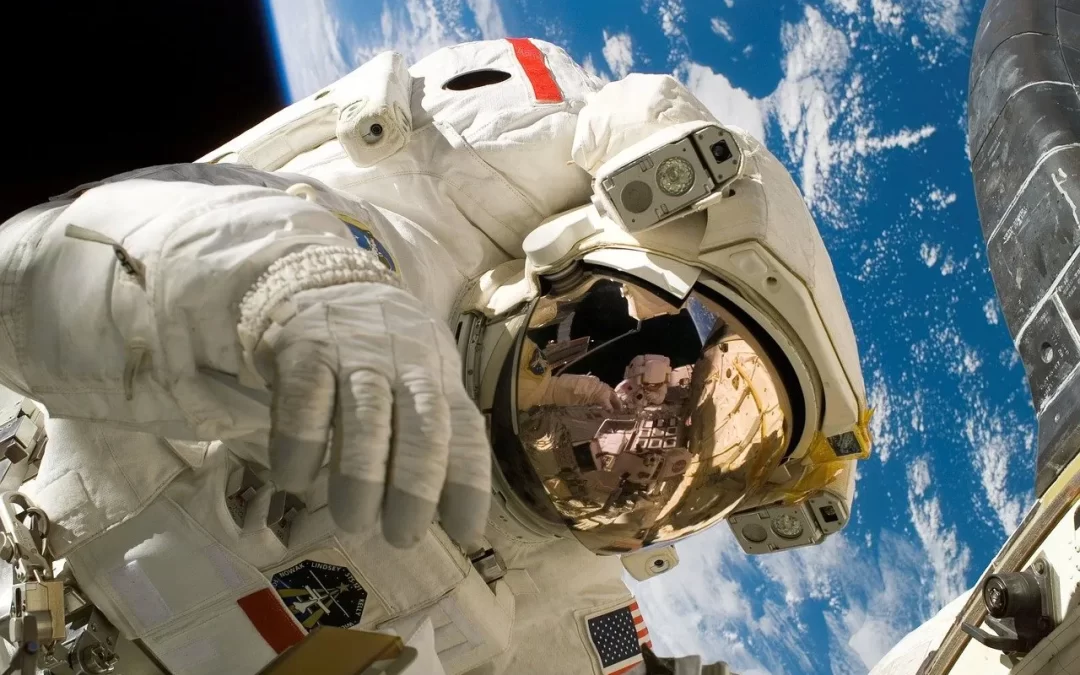Have you ever asked yourself, “What do astronauts eat in space?” If so, you’re not alone. When you visit a science center, it’s not unusual to see kids — and some adults — walking around with astronaut ice cream and a few other astronaut foods because they’re curious about what’s eaten in space.
Today, the food astronauts eat in space is remarkably similar to what people eat on Earth, although you won’t find cookies or bread on the menu. That’s because the crumbs from foods like these can float into a spacecraft’s nooks and crannies and damage the ship.
Space Food Facts: A Quick Overview of the Evolution of Space Food
As space voyages started to become longer over the years, scientists were forced to develop food that astronauts would enjoy eating and that had the nutrients necessary to keep them healthy. The first space meals had the consistency of baby food. These meals were packed into tubes that resembled toothpaste tubes. When astronauts were hungry, they simply squeezed their food directly into their mouths.
When astronauts began to complain about their space food, scientists introduced freeze dried foods that could last for long periods of time without having to be refrigerated. To eat these new foods, astronauts would use a water gun to add moisture to their meal packets, and then they’d wait a few minutes before digging in.
During the NASA Apollo missions, astronauts were able to rehydrate their food with hot water for the first time. This made it possible for them to dine on new space foods, including chocolate pudding, soup and pasta.
In the 1970s, NASA unveiled a specially-designed tray that astronauts could use to heat their food. At the same time, refrigerators were installed on vessels such as the Skylab space station. This made it possible for astronauts to eat fresh fruits and vegetables while they were in space.
Since the 1980s, the food astronauts eat in space has closely resembled what we eat on Earth. To ensure astronauts have enough food at all times, spacecraft like the International Space Station receive regular food “shipments” that are delivered by an automated space vessel, such as the ESA’s Automated Transfer Vehicle or the Russian Progress.
Space Food Experiment for Kids
If your children are curious about space food and you’re looking for a space food experiment for kids, consider conducting a space pudding experiment. Here’s what you need:
- Instant pudding mix
- Powdered milk
- Water
- Zip top bags (quart sized bags work best)
- Measuring spoons
- Measuring cup
To make space pudding, give one zip top bag to each child who wants to make a yummy snack. Put one tablespoon plus two teaspoons of the instant pudding mix into each bag. Then, put one tablespoon plus two teaspoons of powdered milk into every bag. Pour a little less than 1/2-cup of water into each bag and seal the tops.
Tell the kids to start agitating the contents of their bags by squeezing and squishing them to mix the ingredients together. Once the pudding sets up, snip one corner on each bag and let the kids enjoy some homemade space pudding!
Space Academy Camp
At Science Explorers, we want kids to fall in love with science, which is why we offer fun-filled after-school clubs and summer camps for them to participate in. Our Space Academy Camp is one of our most popular summer camps because it introduces youngsters to the countless wonders of space.
To learn more about our camps and clubs or to sign your child up for one of our programs, contact us today.
We offer our camps and clubs to children ages 4 – 11 across parts of Pennsylvania, New Jersey, Delaware, Maryland, New York and Virginia.

